Lightning is an awe-inspiring natural phenomenon that has fascinated humans for centuries. It is an electric charge that can move from cloud to cloud, cloud to ground, or even ground to cloud.
Lightning forms due to the buildup and discharge of electrical energy in the atmosphere, typically during thunderstorms.
This process begins within thunderclouds, where small bits of ice collide, creating an electric charge. The top of the cloud becomes positively charged while the bottom holds a negative charge.
When the difference in charges becomes too great, nature seeks to balance it out through a sudden and powerful discharge we know as lightning.
Understanding lightning is crucial for safety, as it can be dangerous when it strikes the ground. Scientists at the National Severe Storms Laboratory continue to study this phenomenon to predict its occurrence and protect both people and property.
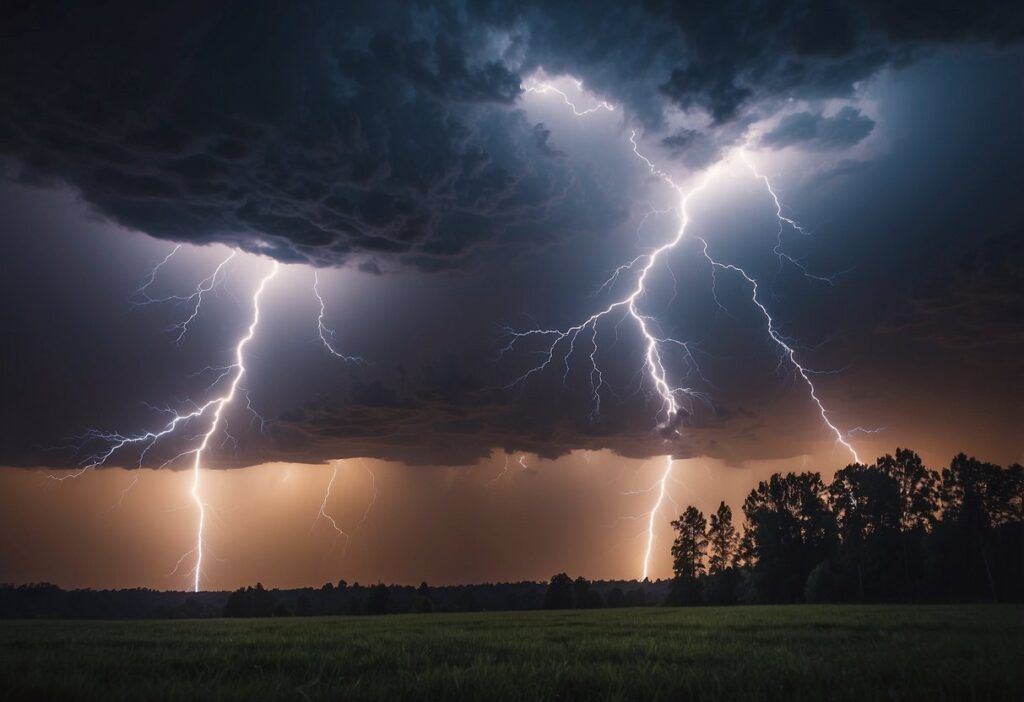
Formation and Science of Lightning
Lightning is a sudden electrostatic discharge that occurs during a thunderstorm. It’s created by differences in electrical charge between clouds and the ground or within the same cloud.
Conditions for Lightning
Lightning forms when certain conditions in the atmosphere are met. It typically occurs in cumulonimbus clouds, which are large thunderclouds. These clouds contain a mix of water droplets, ice particles, and supercooled water.
Strong updrafts in thunderstorms move rain and ice particles within the clouds. These collisions between ice and water particles contribute to the buildup of electrical charge.
The higher parts of the cloud become positively charged, while the middle and lower parts become negatively charged.
Sometimes, the ground below the cloud also accumulates positive charge. This difference in charge, known as an electric field, creates the perfect setup for lightning.
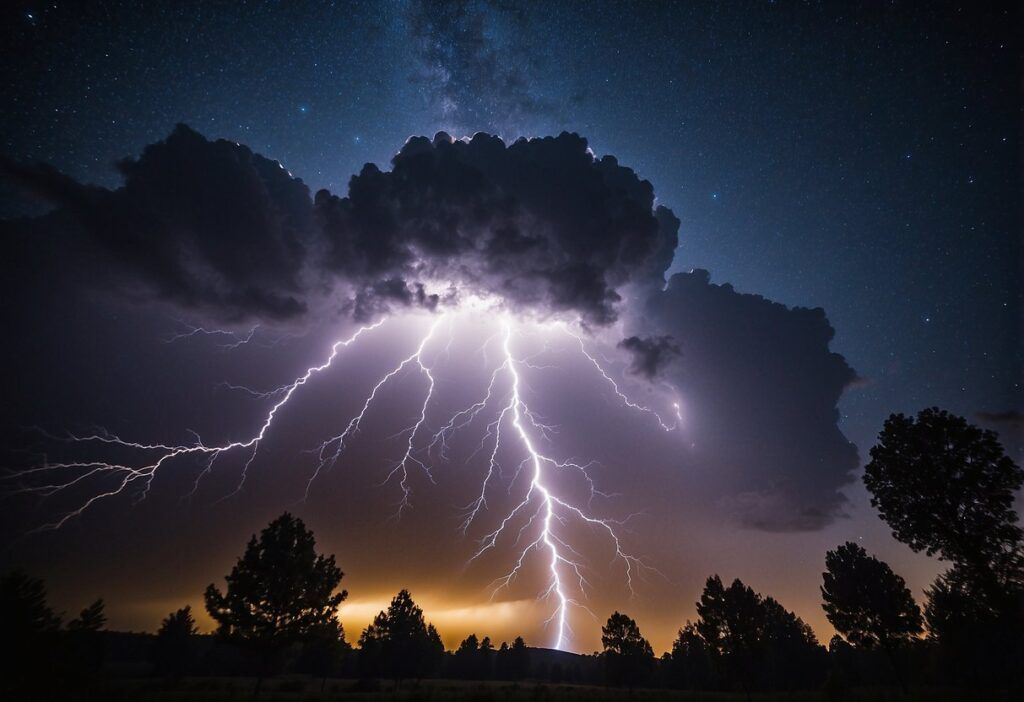
Stages of Lightning Development
Lightning develops in several stages. It begins with the formation of a stepped leader, which is an invisible channel of negative charge moving toward the ground. This channel moves in steps, traveling about 50 meters at a time, in less time than it takes to blink an eye.
As the stepped leader approaches the ground, positive charge accumulates on the earth’s surface and in objects on the ground.
When the two charges get close enough, a return stroke is initiated. This is the visible part of the lightning strike, as the negative charge travels back to the cloud, lighting up the sky in the process.
The return stroke can be followed by several subsequent strokes, all occurring within fractions of a second. These repeated strokes make up what we see as a single flash of lightning.
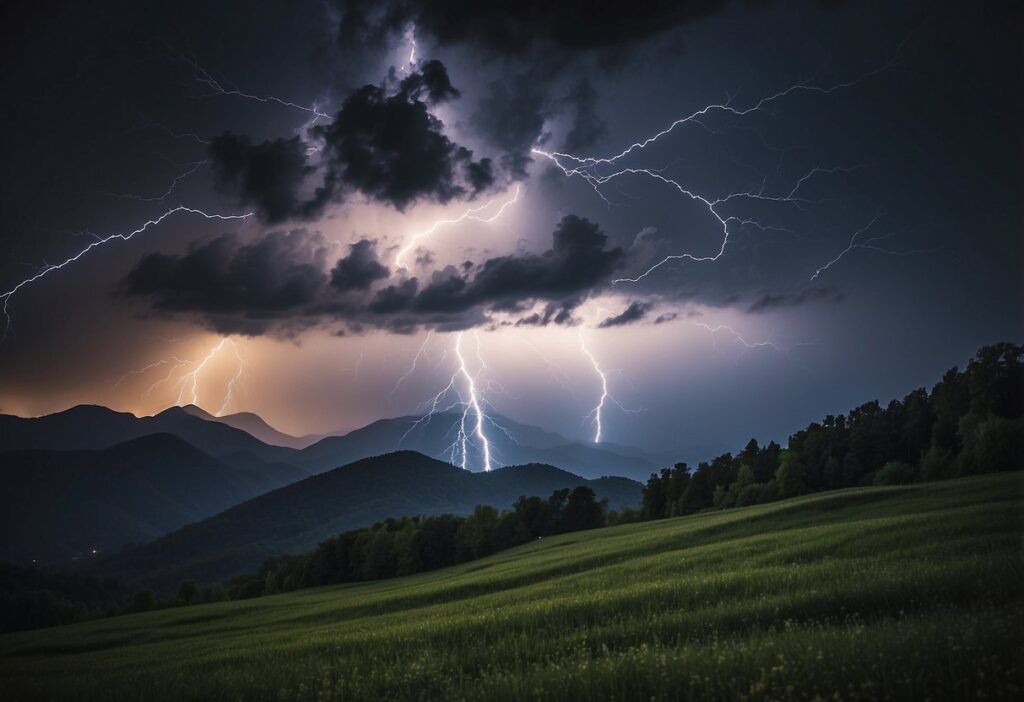
Types of Lightning
Different types of lightning occur based on where the discharge happens:
- Cloud-to-Ground (CG) Lightning: This is the most dangerous type, occurring from the cloud to the ground.
- Intra-Cloud (IC) Lightning: This occurs within a single cloud and is the most common type.
- Cloud-to-Cloud (CC) Lightning: This happens between different clouds.
- Ground-to-Cloud (GC) Lightning: Less common, this type occurs when the discharge travels from the ground to the cloud.
Each type varies in terms of appearance and impact. For example, cloud-to-ground lightning is often seen as a bright bolt shooting toward the earth, while intra-cloud lightning lights up the sky in a diffuse manner without a distinct bolt.
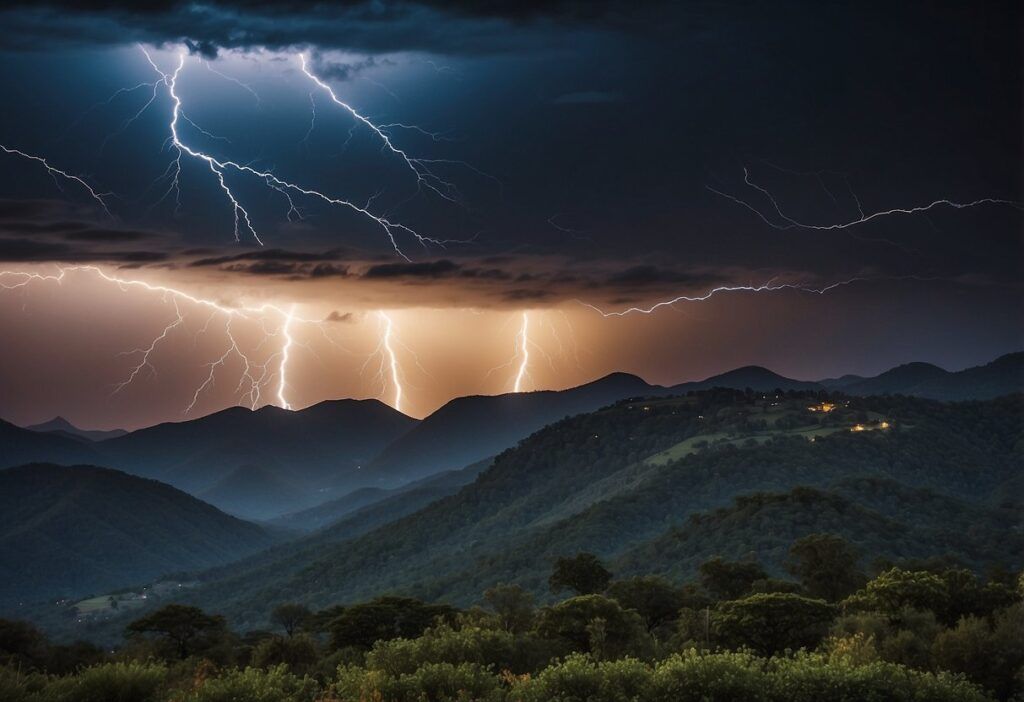
Effects and Impacts
Lightning has significant effects on both natural environments and human-made structures. These impacts are not only fascinating but also can be extremely dangerous.
Impact on Nature
Lightning can start wildfires when it strikes dry vegetation. These fires can spread rapidly, causing large-scale destruction to forests and wildlife habitats.
In addition to fires, lightning can also cause immediate damage to trees by splitting them open or causing them to explode.
In aquatic environments, lightning strikes can be deadly to fish and other marine life. When lightning hits the water, the electrical charge spreads out across the surface, potentially killing or stunning aquatic creatures in the vicinity.
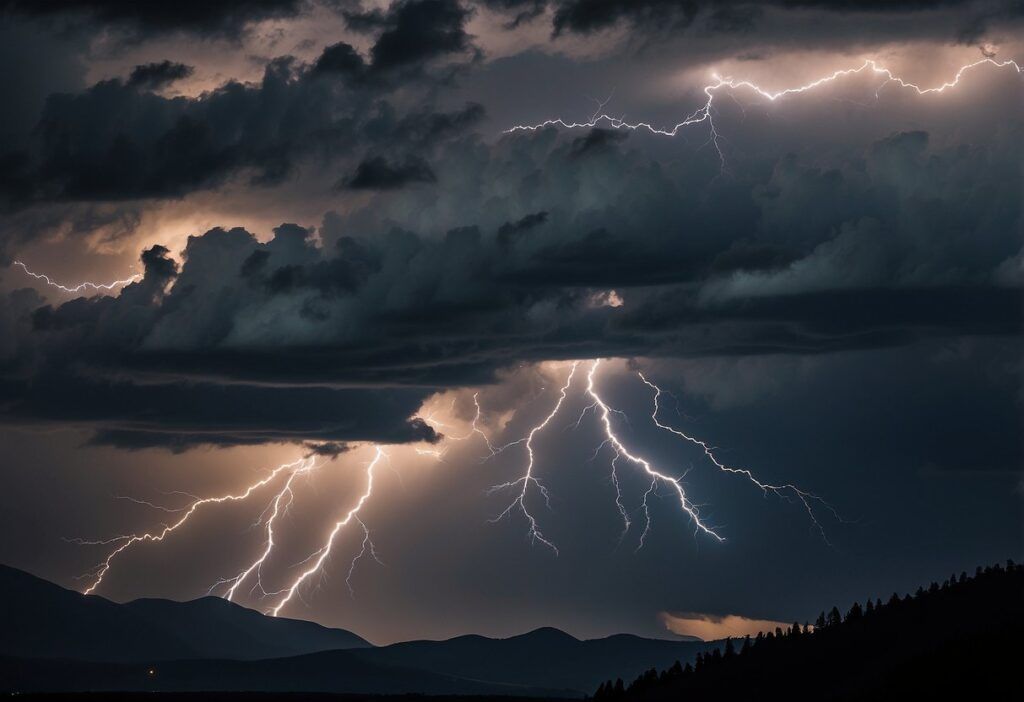
Impact on Human-Made Structures
Lightning can cause severe damage to human-made structures. When it strikes a building, the electrical current can flow through wiring systems, leading to fires or electrical failures.
This is a major concern for power grids, as lightning can cause power outages and damage equipment, which are significant concerns during extreme weather events.
Transport systems are also at risk. Lightning strikes can disrupt airport operations, damage planes, and affect the structural integrity of bridges and other infrastructure.
To protect buildings and other structures, lightning rods and grounding systems are often installed. These help redirect the electrical charge into the ground, reducing the risk of damage and enhancing safety during electrical storms.
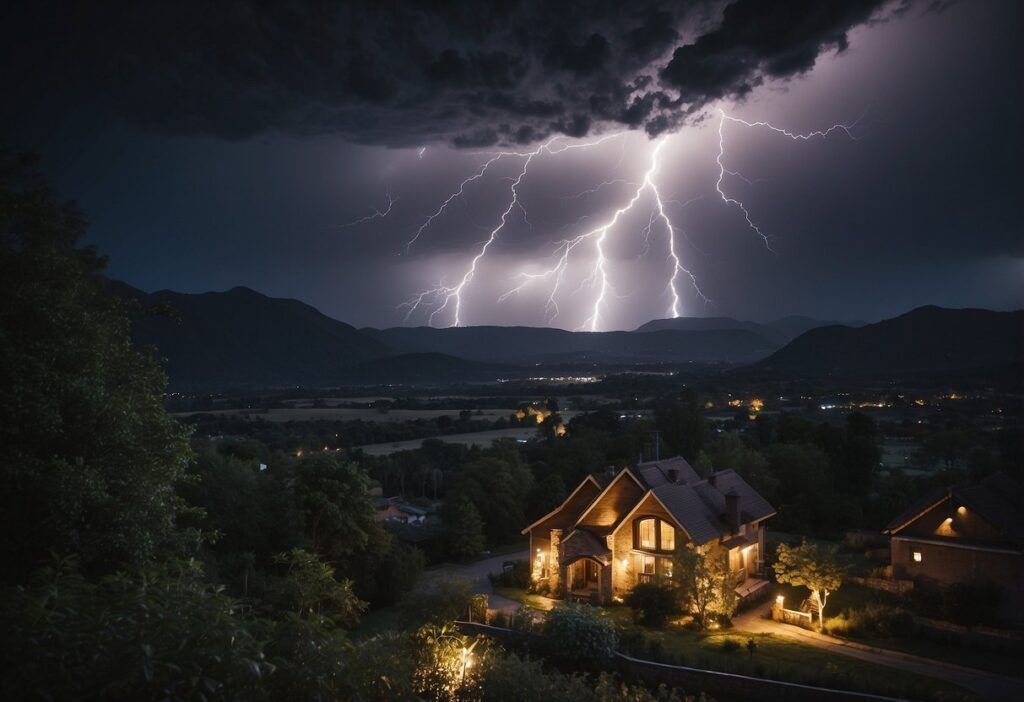
Measurement and Observation
Measuring and observing lightning involves detecting strikes and mapping their locations. Understanding these methods is essential for studying thunderstorms and improving safety.
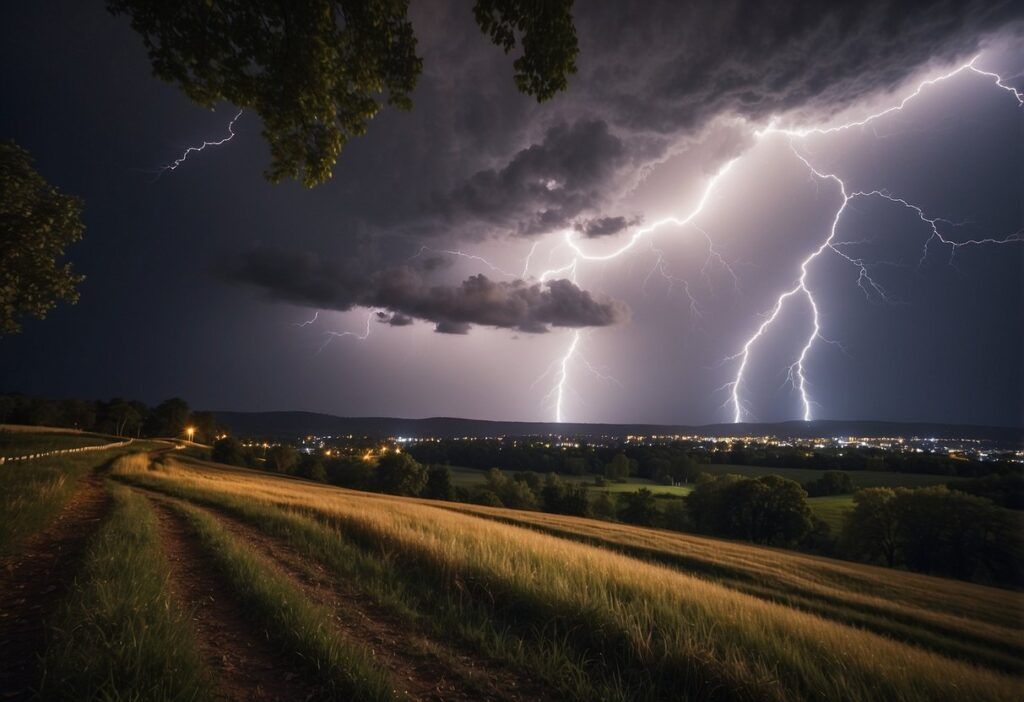
Detecting Lightning Strikes
Detecting lightning strikes is crucial for understanding and predicting storms. Ground-based sensors are widely used. These sensors detect sudden increases in electrical activity that indicate lightning.
One common tool is the Lightning Imaging Sensor (LIS), used for total lightning measurements. It records the time and intensity of lightning strikes, providing valuable data for scientists.
Satellites equipped with these sensors cover broad areas, offering comprehensive monitoring.
Another method involves radio wave detection. When lightning strikes, it produces radio waves, which can be detected by specialized equipment. This method helps pinpoint the exact location and time of a strike.
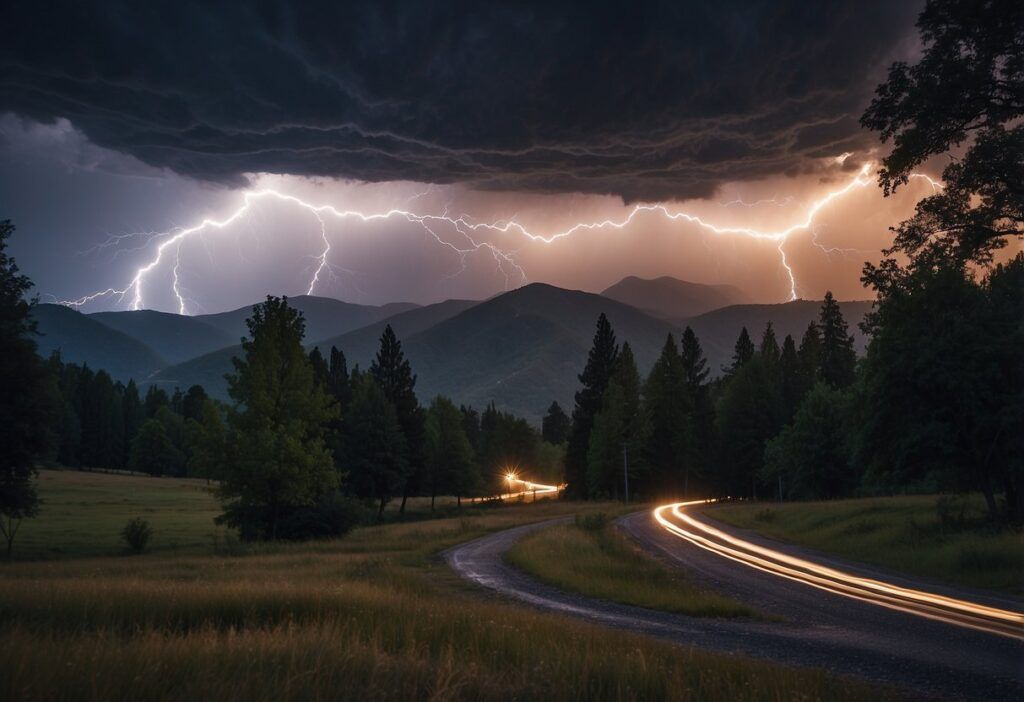
Lightning Mapping
Lightning mapping visualizes the distribution and frequency of lightning strikes. This is achieved through various technologies, including satellites and ground-based networks.
The Lightning Mapping Array (LMA) is a prominent method. It uses a network of stations to track lightning in three dimensions.
These stations detect the radio signals from lightning, allowing the creation of detailed maps. These maps show where and how often lightning occurs, which is vital for weather forecasting and research.
Satellite-based systems, such as the LIS on the International Space Station, enhance mapping efforts. They provide a global perspective, covering vast areas that ground-based networks can’t reach.
This combination of techniques ensures accurate and comprehensive lightning monitoring. For more on LIS, refer to the Lightning Imaging Sensor overview.
